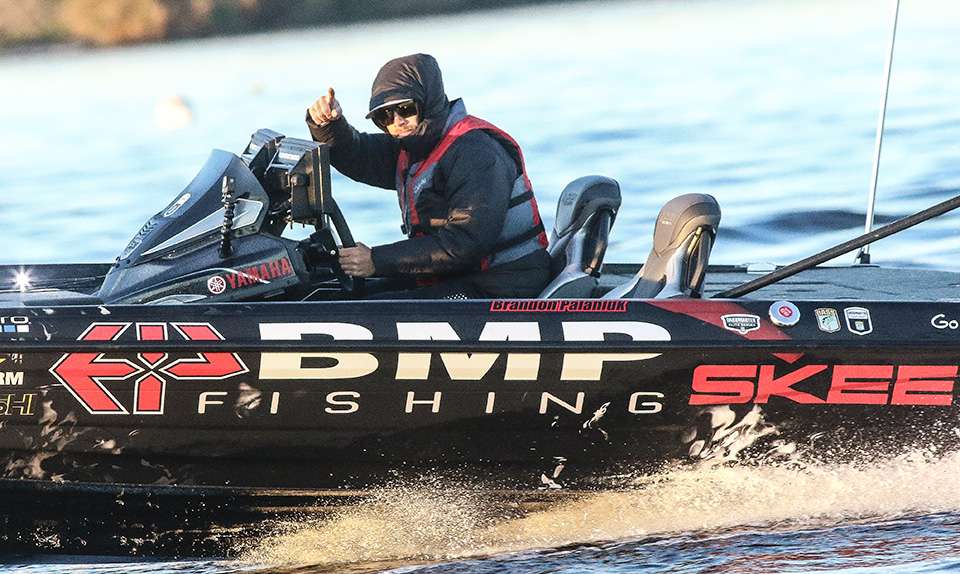
Since I started traveling the country as a professional angler a decade ago, I haven’t had time to return to Idaho much if at all during the spring. While I’m certainly not celebrating the current state of the world under COVID-19, being at home for an extended period of time has allowed me to gain a fresh perspective on the lakes I left behind. All of that time on the road has given me a fresh perspective on familiar waters and allowed me to view them through a different lens.
This is truly a special part of the country, and the fishing here has been nothing short of exceptional this spring. On one unforgettable day, my best five went over 32 pounds, with the biggest one weighing 8 1/2 pounds. Those are all 100% northern-strain fish, which means it takes them twice as long to grow as big as it takes their Florida-strain counterparts.
I’m not a biologist, but I’ve always heard that an 8-pounder up here is 16 to 20 years old, which is older than most Florida-strain fish will live. In addition to the big fish, I’ve also had some great numbers days, up to 50 or 60 fish, which is uncommon here. We simply don’t have the bass numbers of other parts of the country, and I’m hearing from friends that they’re experiencing similar success. If I had to be off the trail in any given year, it appears that 2020 was a good one.
While the fishing has been great almost across the board, I’m convinced that some of my success is indeed attributable to all of the time I’ve spent fishing around the country. When you’re fishing your local lake, you tend to fish spots rather than conditions.
Competing on the Bassmaster Elite Series has taught me to keep an open mind and to change with the conditions. Until you understand how fish react to specific conditions in combination, you’ll never really be able to track them consistently from day to day and hour to hour. By leaving and coming back, I gained that awareness. Our waters here are starting to see more pressure, and by fishing back east where that’s a common occurrence, I’ve become more aware of how that affects bass behavior.
The other big part of my recent success is attributable to my electronics, which are the biggest key to patterning fish consistently. When I hit the road 10 years ago, I had mapping and two-dimensional sonar – no down-imaging, no side-imaging. I rarely dropped a waypoint because I could line up my targets visually. Now, with my ‘birds (short for my Humminbird graphs), I understand exactly what I’m fishing, and more importantly why the fish are there or not there.
One great example of this is a rockpile that I found on one of our smaller lakes when I was 16 years old. It was cold, and I’d read in Bassmaster Magazine about “fishing the first break.” So I was cranking a Shad Rap RS in front of a row of docks. I’d mostly been hitting mud, but suddenly I hit a solitary rock. I fired another cast in and caught a 3-pounder. It became my secret spot, and I’d line it up with landmarks like a shed, a house, a tree and a mountain top.
I hadn’t been to the spot in 12 years, but when I went out a few weeks ago in cold, low water conditions, I approached on the trolling motor. Using my Mega 360 I learned what I had thought was a single rock was actually a rock vein with one bigger bolder on the tip. Looking at it on the screen, I could see why it was so productive – it’s one of the most beautiful rock piles I’ve seen in my life, and there’s nothing like it for miles. It’s the perfect staging spot, and Tiffanie and I wrecked them there catching a bunch of 3- and 4-pounders.
In addition to being really fun, what really amused me about this experience is that while we were crushing them I looked up on the bank, and we were using the same lineup I’d favored as a kid. It was neat to come back and combine my memories with technology to develop a new understanding of my home waters. That type of thing has happened several times over the last month.
You don’t need to leave home and return to gain a new appreciation for your favorite lakes, but you might need to change your mindset. Don’t get caught up in fishing spots. Instead, truly try to get a grasp on the conditions in front of you. There are so many factors that come into play, so it’s never an exact science, but by keeping your mind open and avoiding just fishing your memories, you’ll be surprised at how many more great days you have on the water.





